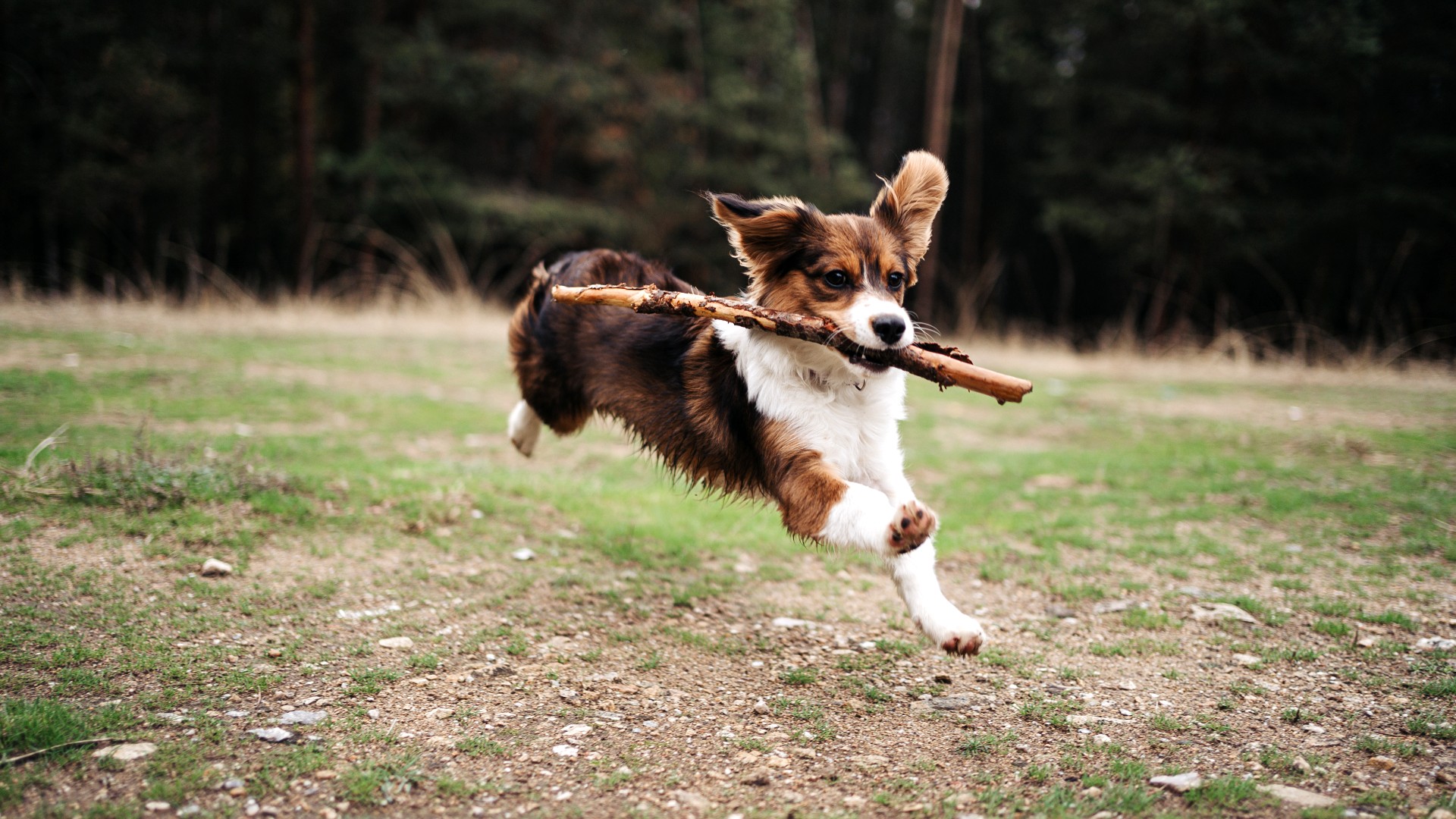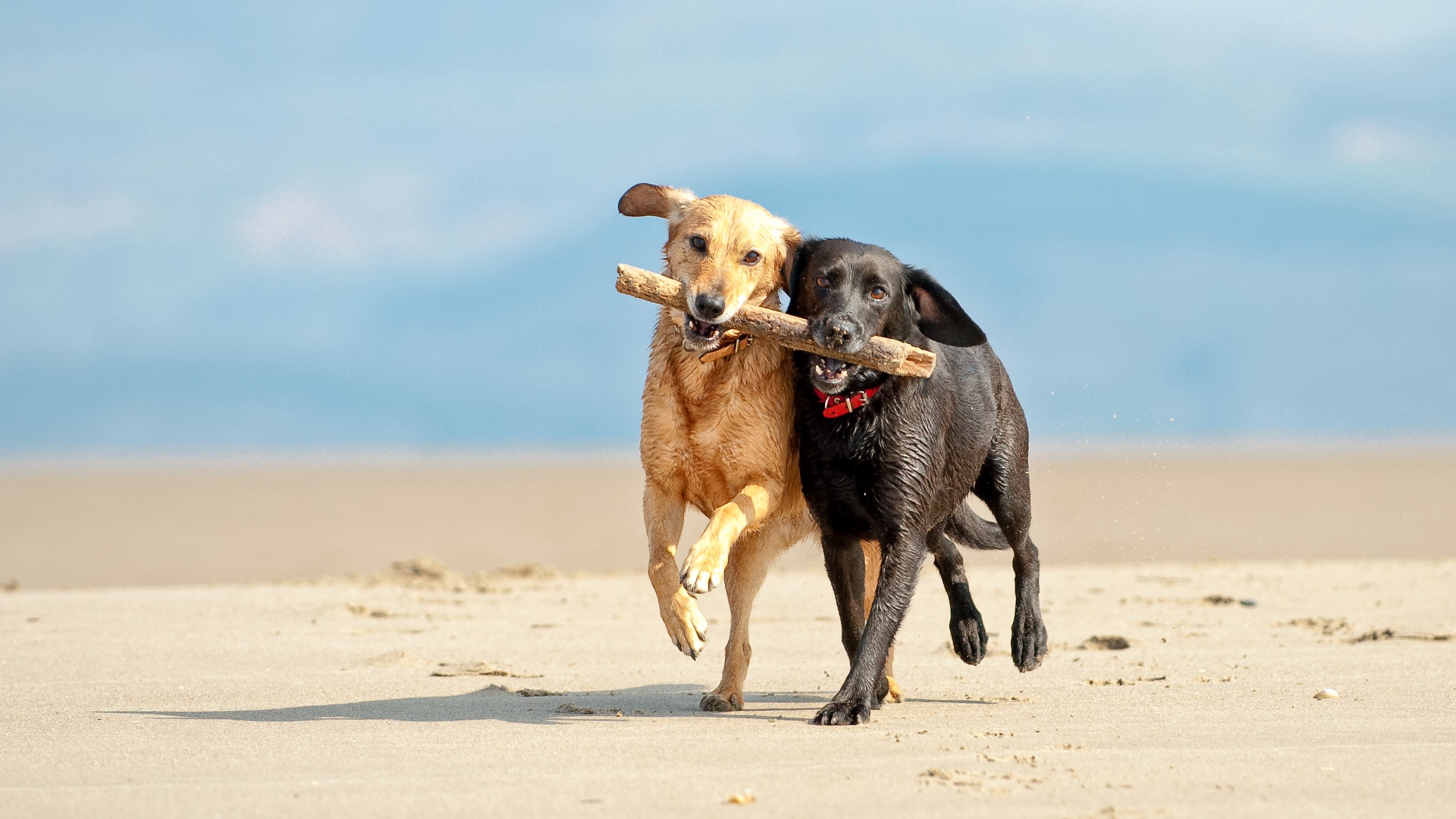Should you throw a stick for your dog? A vet answers...
Should you throw a stick for your dog? Find out why this popular activity isn’t always recommended

Should you throw a stick for your dog? There’s no denying that our canine companions love nothing more than playing fetch, but while throwing a stick for your dog may seem like a harmless bit of fun, it turns out that this seemingly simple game could have disastrous results.
When it comes to playing with your fur friend, most vets recommend sticking to the best puppy toys or an adult equivalent. That’s because sticks have the potential to cause a range of injuries if they splinter in your dog’s mouth when caught, including puncturing the soft tissue in the back of the throat.
Alongside the possible internal injuries that can be caused if your dog ingests pieces of the stick, there’s also the risk that they may accidentally impale themselves if they launch themselves at a stick that has landed at a strange angle or become embedded in the ground.
Because sticks have the potential to cause fatal injuries, most vets advise against using them with your dog. Dr. Joanna Woodnutt goes into more detail below about why sticks are best avoided and provides some safe and fun alternatives that your canine companion is sure to love.

Dr Joanna Woodnutt graduated as a veterinarian from the University of Nottingham in the United Kingdom in 2016 and went on to practice companion animal medicine in the Midlands. She quickly developed a love of consulting and helping clients with medical problems such as dermatology, behavior, and nutrition. Dr Woodnutt now lives in the Channel Islands with her husband Ian, their daughter, and their terrier Pixie.
Is it ok to throw sticks for dogs?
While it may seem like a fun game to play, throwing sticks for dogs is not recommended. Vets across the world warn of the dangers of throwing sticks for dogs, and most have dealt with injuries from dogs playing with sticks. When you throw a stick for your dog, they usually run full-tilt after it. If the stick becomes embedded in the ground or lands at a strange angle, your dog may accidentally impale themselves.
Dogs may also catch the stick then run into something, causing the stick to move further down the throat with a lot of force. It sounds crazy, but it’s not uncommon for a vet to see dogs who have sticks in their skin, mouth, throat, or chest after a game of stick-throwing. This is why vets, including myself, say it’s not ok to throw sticks for dogs.
Why shouldn’t dogs play with sticks?
It can be difficult when your dog decides to pick up a stick and start chewing it or throwing it around. After all, they seem to enjoy it and it’s a very natural pastime for both dog and owner. But if you’re wondering whether sticks are safe for dogs to play with, the answer is no. Unfortunately, as we've found out, dogs can easily become injured when they play with sticks. Dogs that are chasing sticks can injure themselves whilst running or impale themselves on sticks.
But what about chewing - can dogs eat sticks or is that bad too? Chewing sticks is also risky. Wood easily splinters and the sharp pieces can injure the roof of the mouth and other soft tissues such as the gums and throat. Not only can this be sore, but the stick-pieces can cause an abscess that can take a long time to diagnose and treat. In addition, wood fibre isn’t digestible and swallowed pieces could cause a bowel obstruction, which is an emergency.
What type of injuries could a stick give my dog?

The injuries dogs get from sticks vary from minor to extremely serious. Every vet has a story of treating a dog that has run into the bushes or chased a stick only to return injured. The worst cases, of course, are when the dog doesn’t return at all. If your dog chases a stick and impales themselves, the stick can do significant internal damage as it penetrates the body. It also carries dirt and infection into the body so that, even if the injury itself isn’t severe, the subsequent infection causes a lot of damage.
I myself have seen two stick injuries in dogs in the last five years – one dog at a referral centre, who eventually died from his injuries to his throat, and another who had impaled his chest but only had minor damage to the skin and muscle.
What can I give my puppy instead of sticks?
So if you’re going to be a good owner and not throw sticks, what can you throw instead? Well, firstly it’s not a good idea to do too many throwing games. Repeated acceleration followed by rapid braking and twisting/turning are hard on dog’s joints and increase the risk of arthritis. So although a bit of ‘fetch’ is ok, you should make it a small part of your dog’s day, and only play after a period of warm up to reduce muscle and joint injury.
While some dogs like balls, others prefer the shape of a stick. If your dog wants to chase sticks, you’ll be pleased to hear that safe, non-wood ‘sticks’ have been developed that are softer and bend if your dog runs into them. Extra-strong rubber is a good material for a stick that’s safe to play with.
If your dog likes to chew sticks, try to find another outlet for their chewing that is safer. There are lots of safe dog chews no matter how strong your dog’s jaws are. If your dog really likes chewing wood, there are some options that don’t splinter into sharp pieces, like chews made from roots. You may need to combine a good chew toy with some training if your dog eats everything outside.
Looking for more advice and guidance on how to play with a dog? We’ve got you covered. Plus, if you think you’re playing fetch with your dog all wrong - this simple change will result in a healthier and happier pup.
PetsRadar Newsletter
Get the best advice, tips and top tech for your beloved Pets
After graduating as a vet from the University of Nottingham, Dr Joanna Woodnutt went on to practice companion animal medicine in the Midlands. Since then, she has also written for countless online and print publications and is a regular contributor for Edition Dog Magazine.
